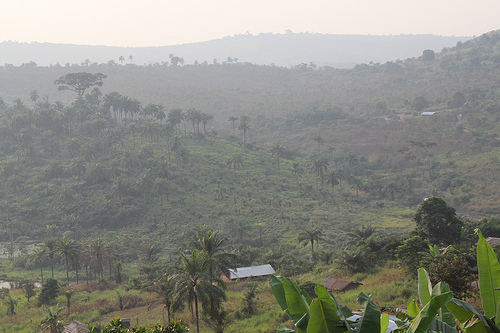
Politics of regional integration in Central Africa

It should be acknowledged that regional integration dynamics in Central Africa have been lagging far behind that of western, eastern and southern Africa where important advances have been made over the last decade in the promotion of regional co-operation. Taking the Democratic Republic of Congo (DRC) as a case study, this paper analyses the politics of formal regional integration in Central Africa and argues that it is a two-level game. It supports this argument with an overview of the different dynamics of regional integration, and by evaluating the DRC’s role in regional organisations. The DRC was a deliberated choice. It is generally agreed that stabilisation and pacification of the DRC as well as its economic development strongly rely on regional developments.
Arguably because of its geographical position on the continent, the DRC simultaneously belongs to four Regional Economic Communities (RECs), namely CEEAC (Communauté Economique des Etats de l’Afrique Centrale, or Economic Community of Central African States), SADC (South African Development Community), COMESA (Common Market for Eastern and Southern Africa) and CEPGL (Communauté Economique des Pays des Grands Lacs or Economic Community of the Great Lakes Countries). In addition to these organisations, the DRC participates in several other regional bodies. Given its demographic and economic potential, it could be expected that the DRC would become a major actor in these organisations and a key player in a regional integration process in the Central Africa Region, similar to for example Nigeria, South Africa and Kenya in their respective regions. However, this has not been the case. From the early 1990s onwards, regional and national political instability as well as violent conflicts have turned the Great Lakes Region into what has been described as a regional ‘war complex’ and a number of countries into military adversaries. Despite eff orts to promote peace that have eased tensions and created new opportunities for regional integration, the DRC has not been able to strengthen its regional position. This can be ascribed to a lack of political vision, political will, human and financial capacities as well as the overall regional climate. Moreover, its current endeavour towards regional integration is not the outcome of a well-defined policy but rather of opportunistic short-term strategies. This chapter is divided into two parts. The first part analyses the particular position of the DRC within regional organisations and discusses how internal and external dynamics have influenced the process of regional integration. The second part deals with the prospects and challenges of regional integration in Central Africa.
in Chrysantus Ayangafac (ed.), Political Economy of Regionalisation in Central Africa, ISS Monograph Series No 155, Nov. 2008.
(Photo credit: DFID UK, Flickr)